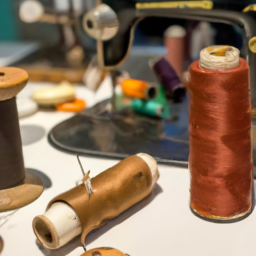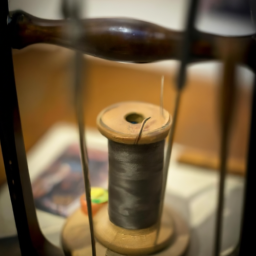
The Evolution of the Sewing Machine
sewing-machine-evolution.jpg” alt=”Evolution of the Sewing Machine”>
Since its invention, the sewing machine has revolutionized the art of textile production and made a significant impact on the fashion industry and daily life. Let’s delve into the rich history of this remarkable invention.
First Attempts at Automating Sewing (18th Century)
The history of the sewing machine can be traced back to the 18th century when various inventors attempted to automate the process of sewing. The first crude models were developed, but they lacked efficiency and practicality. Inventors such as Charles Weisenthal, Thomas Saint, and Balthasar Krems ultimately fell short of developing a commercial sewing machine.
Isaac Singer’s Breakthrough (19th Century)
In 1851, Isaac Singer, a genius inventor and entrepreneur, patented the first practical sewing machine. Singer’s machine featured many crucial innovations such as the up-and-down needle motion and the ability to stitch continuously. This invention marked the beginning of a new era in textile production and brought about a tremendous social impact.
The Rise of Industrial Sewing Machines
In the late 19th century, industrial sewing machines revolutionized garment production. These powerful machines transformed the textile industry by increasing production speed and accuracy. Companies like Singer, Brothers, and Wheeler & Wilson became household names during this period, as their sewing machines became widely adopted.
Electric Sewing Machines (20th Century)
In the early 20th century, advancements in electrification paved the way for electric sewing machines. This innovation replaced foot treadles, significantly enhancing operational efficiency. Electric machines featured improved speed control, eliminating the need for manual pumping and reducing human effort.
Computerized Sewing Machines (Late 20th Century - Present)
By the late 20th century, computerized sewing machines emerged, incorporating cutting-edge technology to enhance precision and versatility. These machines offered programmable stitching patterns, automated thread tension control, and even built-in embroidery functions. Home hobbyists and professional seamstresses alike embraced these advanced sewing machines.
Modern Innovations and Future Trends
Modern sewing machines now feature touchscreen interfaces, built-in tutorials, and compatibility with digital design software. We can anticipate even more extraordinary innovations in the future, as technology continues to advance and reshape the textile industry.
Conclusion
The history of the sewing machine is a testament to human ingenuity and the pursuit of efficiency. From Isaac Singer’s breakthrough to the advent of computerized sewing machines, each development has left an indelible mark on the industry. Today, sewing machines continue to play a vital role in fashion, allowing designers and enthusiasts to bring their creative visions to life.




